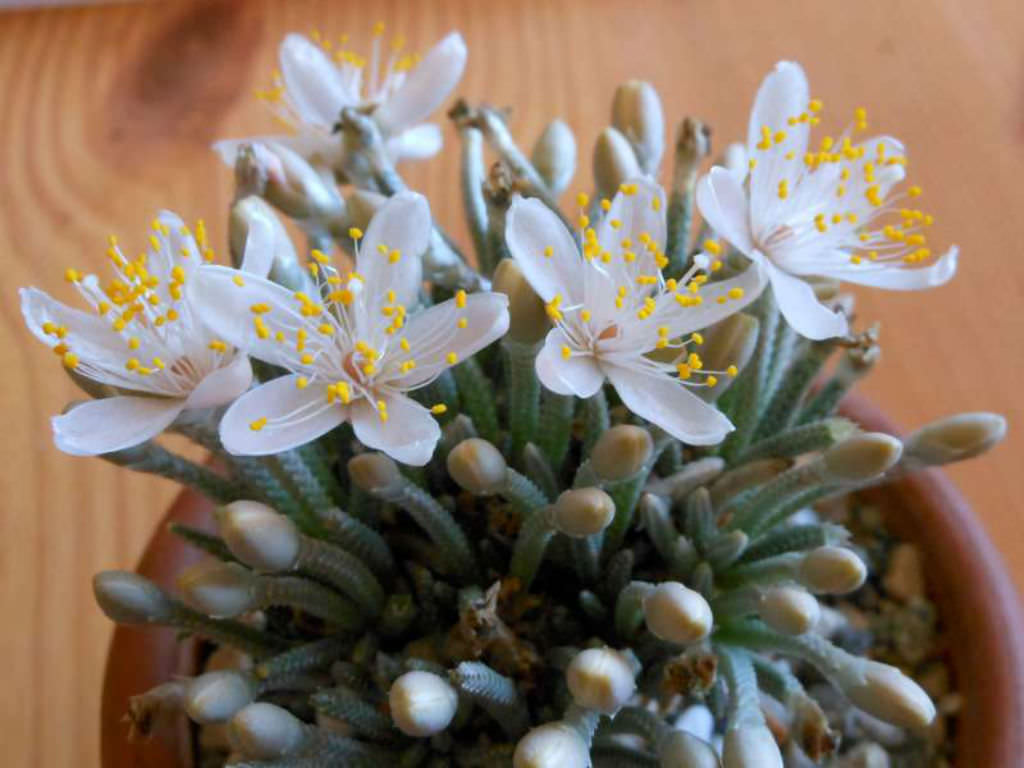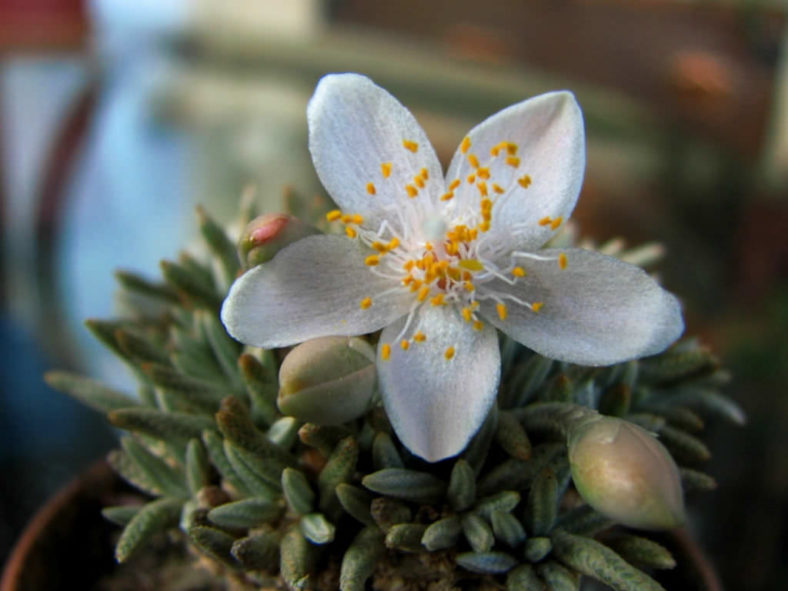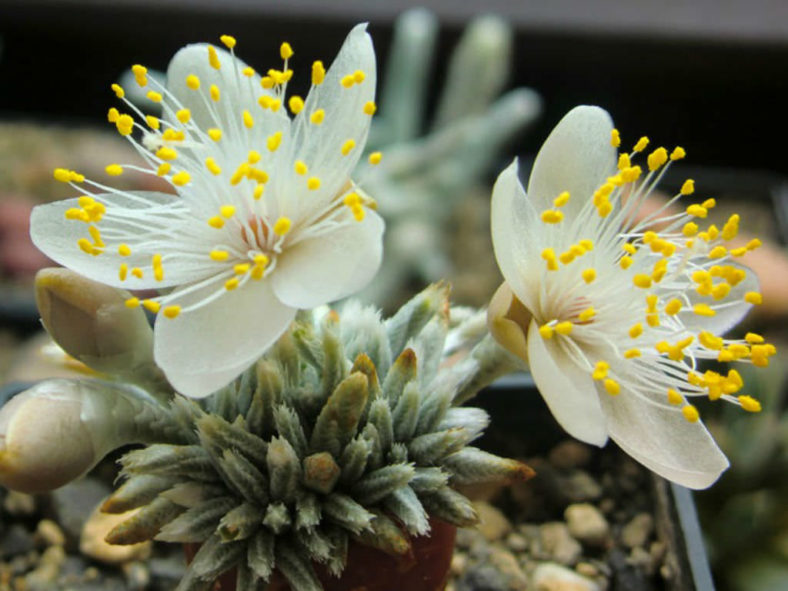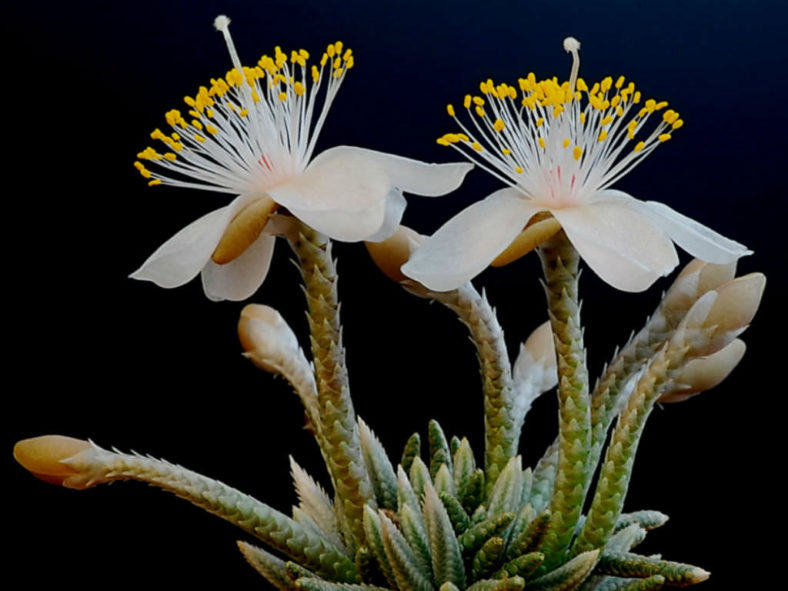Scientific Name
Avonia quinaria subsp. alstonii (Schönland) G.D.Rowley
Synonym(s)
Anacampseros alstonii, Anacampseros quinaria subsp. alstonii, Avonia alstonii
Scientific Classification
Family: Anacampserotaceae
Genus: Avonia
Origin
Avonia quinaria subsp. alstonii is native to South Africa (Namaqualand, Cape Province).
Description
Avonia quinaria subsp. alstonii, also known as Anacampseros quinaria subsp. alstonii or Anacampseros alstonii, is a dwarf bizarre succulent with a flat-topped underground caudex and a crown of slender branches covered with tiny leaves hidden by triangular to broadly ovate scales darkening towards the tip. The caudex can reach up to 3 inches (7.5 cm) in diameter with the crown above the ground, while the branches can grow up to 1.2 inches (3 cm) long. The tiny leaves are flat, semi-orbicular, and arranged in five rows.
The flowers are solitary, usually white or in shades of pink, and can measure up to 1.2 inches (3 cm) in diameter. They appear at the tips of the branches in summer.

Hardiness
USDA hardiness zones 10a to 11b: from 30 °F (−1.1 °C) to 50 °F (+10 °C).
How to Grow and Care
Although regarded as a choice and difficult plant, it is relatively easy to grow. Avonias grow very slowly and require careful cultivation. However, if grown correctly, clustering in cultivation will reward the grower with great displays of tiny flowers. These plants grow well at moderate to cooler temperatures in partial sun. Bright light enhances leaf colors and makes for a compact plant. Depending on the species, they enjoy gritty, free-draining soil with added organic material and low to moderate watering.
The seeds germinate quickly at temperatures between 59 and 70 °F (15 and 21 °C). In cultivation, the young plants develop much quicker than in their natural surroundings, where they do not have ample water supply. Generally, they are not easy to raise from seed as too much water kills them immediately, which also happens when not watered.
Learn more at How to Grow and Care for Avonia.
Links
- Back to genus Avonia
- Succupedia: Browse succulents by Scientific Name, Common Name, Genus, Family, USDA Hardiness Zone, Origin, or cacti by Genus
Photo Gallery
Click on a photo to see a larger version.


